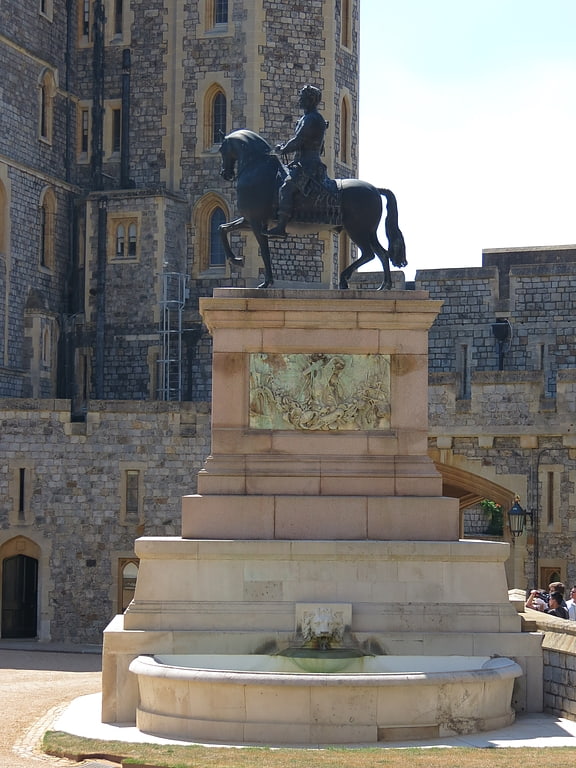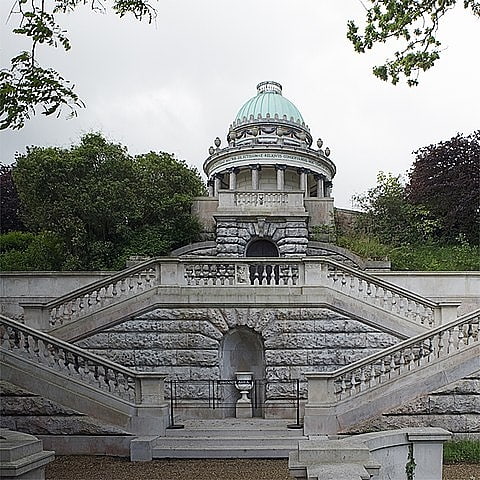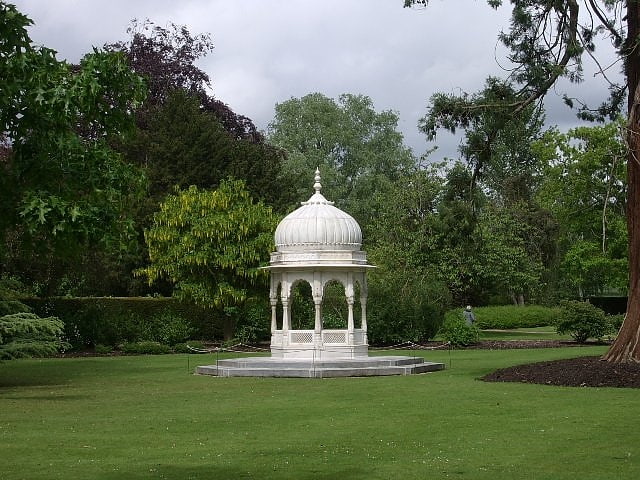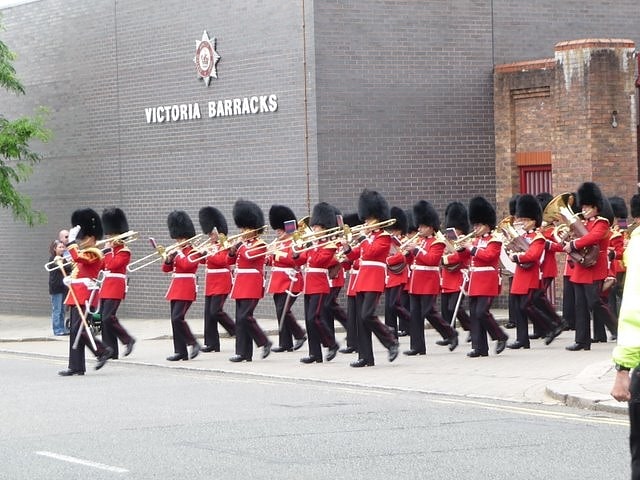Discover 4 hidden attractions, cool sights, and unusual things to do in Windsor and Eton (United Kingdom). Don't miss out on these must-see attractions: Equestrian statue of Charles II, Duchess of Kent's Mausoleum, and Indian Kiosk. Also, be sure to include Victoria Barracks in your itinerary.
Below, you can find the list of the most amazing places you should visit in Windsor and Eton (England).
Table of Contents
Equestrian statue of Charles II

A bronze equestrian statue of King Charles II on horseback sits in the Upper Ward of Windsor Castle beneath the castle's Round Tower. It was inspired by Hubert Le Sueur's statue of Charles I in London, the statue was cast by Josias Ibach in 1679, with the marble plinth featuring carvings by Grinling Gibbons. The statue was commissioned by Tobias Rustat, Charles's valet. Rustat was a significant philanthropist of the 1670s. Rustat's fortune was partially derived from the transatlantic slave trade, having been an investor in the Royal African Company.
The rear left hoof of the horse is inscribed 'Josias Ibach Stada Bramesis 1679 FUDIT'. Gibbons had been appointed the 'Surveyor and Repairer of Carved Work at Windsor' in 1682. The Royal Collection Trust listing for the statue describes the design as "very innovative" in its depiction of Charles as a Roman emperor with its absence of traditional symbols of the British monarchy such as the Order of the Garter. Charles is depicted wearing a suit of armour in a classically Roman style, without spurs and stirrups for his horse. He is crowned with a laurel wreath. The statue started a subsequent trend for British monarchs to be portrayed in a Roman style.
The statue may have been inspired by the Equestrian Statue of Marcus Aurelius that was originally situated on the Capitoline Hill in Rome with its similar placing of the horse and design of the plinth.[1]
Duchess of Kent's Mausoleum

The Duchess of Kent's Mausoleum is a mausoleum for Victoria of Saxe-Coburg-Saalfeld, Duchess of Kent, the mother of Queen Victoria. It is situated in Frogmore Gardens in the Home Park, Windsor. It was listed Grade I on the National Heritage List for England in October 1975. The bridge leading to the island from the mausoleum is listed Grade II.
The Duchess spent the last years of her life at Frogmore House and the top part of the structure was originally intended as a summer house, with the lower level of the structure to be the site of her interment. The Duchess had originally expressed a desire to be buried in the mausoleum of her brother, Ernest I, Duke of Saxe-Coburg and Gotha, in the Bavarian town of Coburg. The Duchess died at Frogmore House on 16 March 1861 before the summer-house was completed so the upper chamber became part of the mausoleum and now contains a statue of the Duchess by William Theed completed in 1864. It was completed in July 1861 following the Duchess's death in March. The Duchess's body lay at St George's Chapel in Windsor before being interred in the mausoleum in a granite sarcophagus in August 1861.
The mausoleum was consecrated in July 1861 by Samuel Wilberforce, the Bishop of Oxford, assisted by the Rev Gerald Wellesley, the Dean of Windsor, the Rev Charles Leslie Courtenay, the Canon of Windsor, the Rev J. St. John Blunt, Chaplain to Albert, Prince Consort, and the Vicar of Old Windsor, the Rev H. J. Ellison, Chaplain at Windsor Castle and Vicar of New Windsor, and the Rev Charles Loyd, the Vicar of Great Hampden.[2]
Indian Kiosk

The Indian Kiosk is located at Frogmore, in the Home Park of Windsor Castle, in Berkshire, England. The kiosk comes from India and was originally designed for the Qaisar Bagh, a palace complex in the city of Lucknow. The palace was looted by British soldiers following the suppression of the Indian Rebellion of 1857 and the kiosk was brought to England by Charles Canning, Governor-General of India, and presented to Queen Victoria. The Queen sited it in her private gardens at Frogmore, near to the mausoleum to her mother. It is a Grade II listed structure.[3]
Victoria Barracks

Army barracks in Windsor, England. Victoria Barracks is a British Army barracks located 0.25 miles south of Windsor Castle.[4]